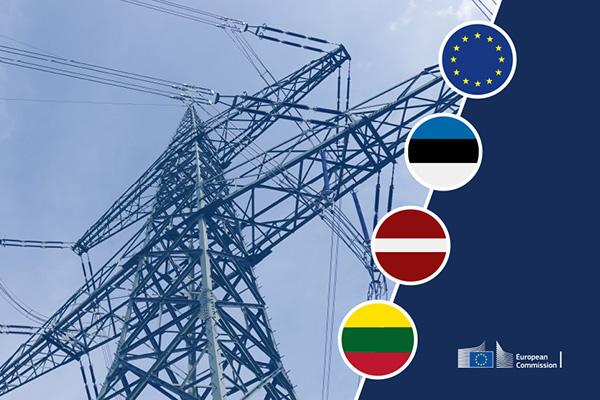
The Commission warmly welcomes today’s agreement by Estonia, Latvia and Lithuania to accelerate the integration of their electricity grids with the Continental Europe network (CEN) and their disconnection from Russia and Belarus. Under a joint declaration signed this morning by the three Prime Ministers, the deadline for synchronisation is brought forward from the end of 2025, as initially established by political declarations in 2018 and 2019, to February 2025. Today’s political declaration follows an agreement between the respective Transmission System Operators (TSOs) earlier this week on the steps for accomplishing the fully-fledged synchronisation in February 2025.
The relevant grids reinforcements are a Project of Common Interest (PCI) on the Union’s fifth PCI list under the TEN-E Regulation and have received record financial support from the Connecting Europe Facility for Energy of more than € 1.2 billion. The full integration of the Baltic States into the internal energy market will also facilitate the uptake of renewable energy, supporting them achieve the European Green Deal objectives.
European Commissioner for Energy Kadri Simson said:
I would like to congratulate the three Baltic leaders today for this historical agreement, which will enable us to complete the full integration of the three Baltic states into the EU electricity grid almost one year earlier than previously intended. This has been a priority EU energy infrastructure project for the Commission for many years, receiving substantial EU funding, and will continue to receive support until it is completed. Today’s agreement is a symbol of European solidarity in action. The project will not only bring energy security in the region and complete the EU integration of the three Baltic States, but will also support the implementation of the Green Deal by ensuring secure, affordable and sustainable energy for the Eastern Baltic Sea region and the Union as a whole.
Whilst formerly an "energy island", isolated from other member states, the Baltic States region is now connected with European partners through electricity lines with Poland (LitPol Link), Sweden (NordBalt) and Finland (Estlink 1 and Estlink 2). Their integration has been a priority of the Baltic Energy Market Interconnection Plan High-Level Group (“BEMIP”), which dates back to June 2009, when the first Memorandum of Understanding was signed. These projects were made possible and built with EU support. For historical reasons, however, the Baltic States' electricity grid is still operated in a synchronous mode with the Russian and Belarusian systems. The joining of the Baltic states to the continental European network was agreed between the European Commission, Poland and the three Baltic states already in 2018 and reinforced in 2019. The initial deadline for the finalisation of the project had been set by the end of 2025. This deadline is now being brought forward to February 2025.
The desynchronisation of the Baltic States' electricity grid from these systems and the synchronisation with the continental European network (CEN) is an essential political priority for the achievement of the Energy Union. Projects to reinforce the respective grids are included in the fifth EU list of Projects of Common Interest (PCIs). PCIs are intended to help the EU achieve its energy policy and climate objectives: affordable, secure and sustainable energy for all citizens. Projects on the PCI list are also eligible to receive Connecting Europe Facility-Energy funding.
Related Links
Details
- Publication date
- 3 August 2023
- Author
- Directorate-General for Energy
